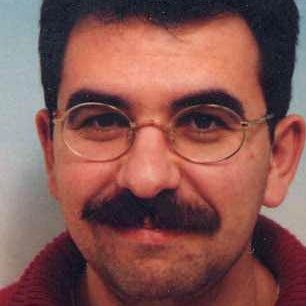
Jose Sebastian
Carrion Garcia
Catedraticos de Universidad
Departamento: Plant Biology
Centro académico: Faculty of Biology
Area: Botany
Research group: Ecce Homo: Quaternary Cenozoic Evolution Homo Ecology
Email: carrion@um.es
Personal web: https://jscarrion.es/
Doctor by the Universidad de Murcia with the thesis Evolución paleoambiental durante el Pleistoceno superior en el sureste de España. Las secuencias polínicas de las Cuevas de la Carihuela (Granada) y Beneito (Alicante) 1990.
Full Professor (Catedrático) at the University of Murcia, Spain. 2004-present. Degrees: BSc in Biology (1985), MSc in Botany (1986), PhD in Palynology (1990). Awarded Extraordinary Undergraduate (1986) and Doctorate Awards (1990). Research Fellowships: Positive evaluation of six 6-year research fellowships by CNEAI (1987-2022). Rankings: Listed among the World's Top 2% Scientists and in the Webometrics Ranking of World Universities (Scimago plus Scholar). h-index: 50 (Clarivate), 53 (Scopus), 64 (ResearchGate), 65 (Scholar); ranked 1-2 in Palaeobotany. Education and Research Stays: Studied palynology at the University of Valencia under Michèle Dupré. Main research stays at the University of Amsterdam (NPPs and peatbog palynology), Gibraltar Museum (ecology and archaeobotany of Neanderthals), and the Free State (South Africa) (copropalynology and southern African paleoecology). Associate Researcher at the University of Witwatersrand (South Africa) since January 2020. Research Group: Leader of the transdisciplinary research group ECCE HOMO (Cenozoic Evolution, Quaternary, Ecology, Homo: E005-11). The group's goal is to "democratize science" by integrating paleosciences with investigative, didactic, and divulgative outputs. Member of the First Teaching Innovation Group at UM (AEC: Art in Construction Ecotone). Founder: Established the palynological and paleoecological research line at the University of Murcia in the 1980s. Experience in pollen analysis (pollen, spores, non-pollen microfossils) of lacustrine, marshy, and archaeological sediments (minerogenic and biogenic) in the Mediterranean Basin and African territories, honey analysis, aerobiology, coprolites, forensic palynology, palaeobotanical identification of fruits, seeds, and other macroremains (leaves, stems, charophyte gyrogonites), gastropods, and ostracods. Experienced in spore and pollen morphology related to taxonomy and evolution. Research Interests: Palaeoflora and palaeovegetation of the Iberian Peninsula, paleoart from a phytocentric perspective, ecological changes associated with patterns and processes of evolution in hominins, cultural collapses related to environmental changes, plant extinctions at regional and continental scales, interactions between vascular plants and vertebrates in a palaeobiological context with an emphasis on the Cenozoic, palaeobotanical taphonomy, palaeoecological corollaries for biological conservation and forest management, and natural heritage. Pollen Records: Analyst or co-analyst of 56 new pollen records. 45 reports of negative results in pollen analyses of sediments. Innovations: Pioneering application of the concepts of inertia and resilience in paleoecology (1990s) through pollen sequences during the Quaternary to understand the vulnerability thresholds of plant ecosystems. Designed protocols for taphonomic analysis of pollen in caves. Published an international review paper discussing the importance of negative results in palynology. Developed initiatives to promote the palynology of biogenic deposits, especially coprolites. Publications: Author/co-author of 279 papers and book chapters, 26 books and book chapters, and 31 book reviews. Published in highly cited journals across various fields including Nature, Science Advances, PNAS, PLOS ONE, Scientific Reports Nature, Trends in Ecology and Evolution, Ecology, Journal of Ecology, Journal of Biogeography, Journal of Quaternary Science, Journal of Human Evolution, Global Ecology and Biogeography, Diversity and Distributions, Palaeo3, Holocene, and New Phytologist. Appeared 28 times in Quaternary Science Reviews, the most prestigious journal of Quaternary sciences. Projects: Uninterrupted coordination since 1997 of Plan Estatal projects related to palaeofloristic themes in the Iberian Peninsula. Participated in 63 R&D









